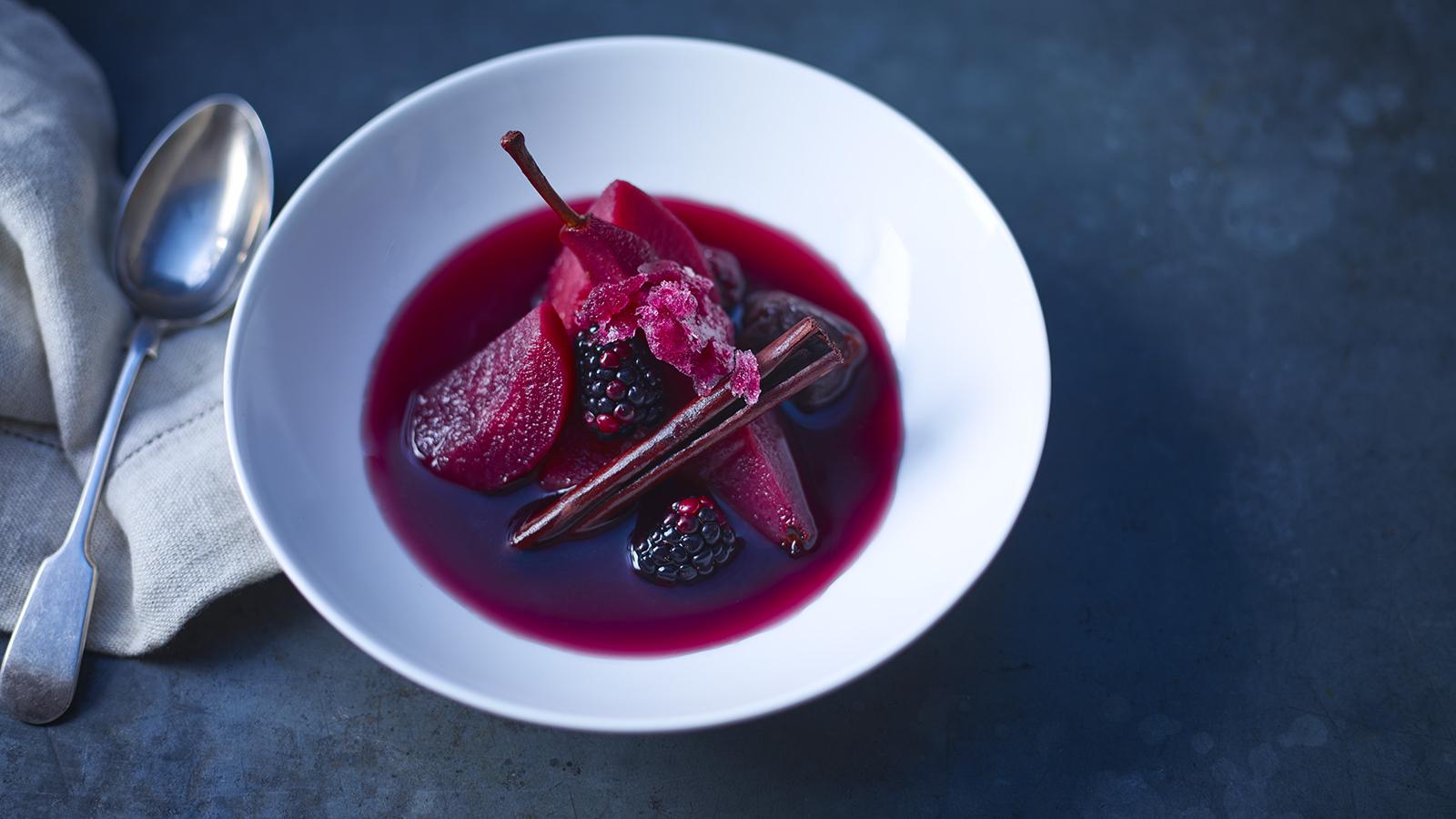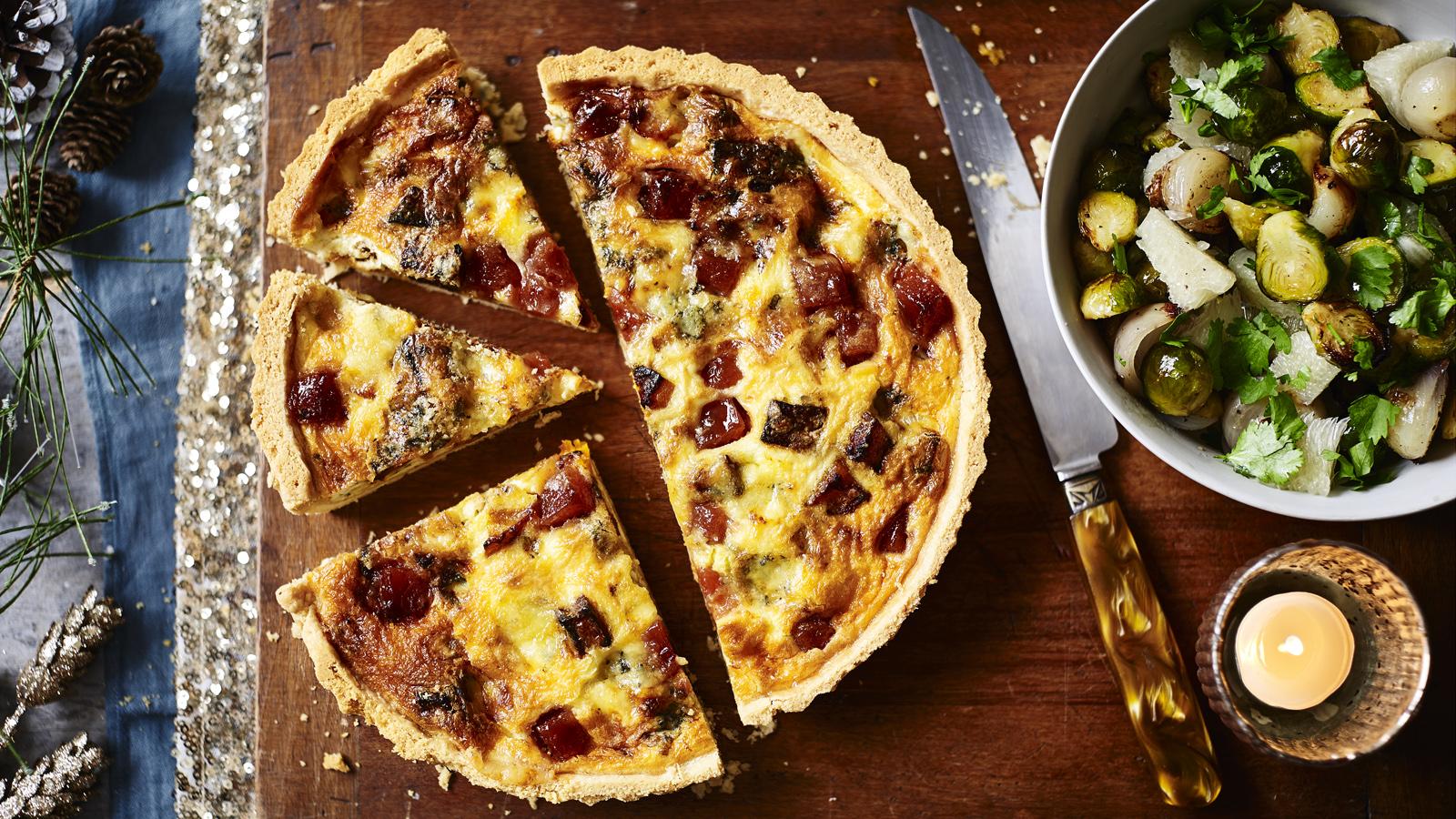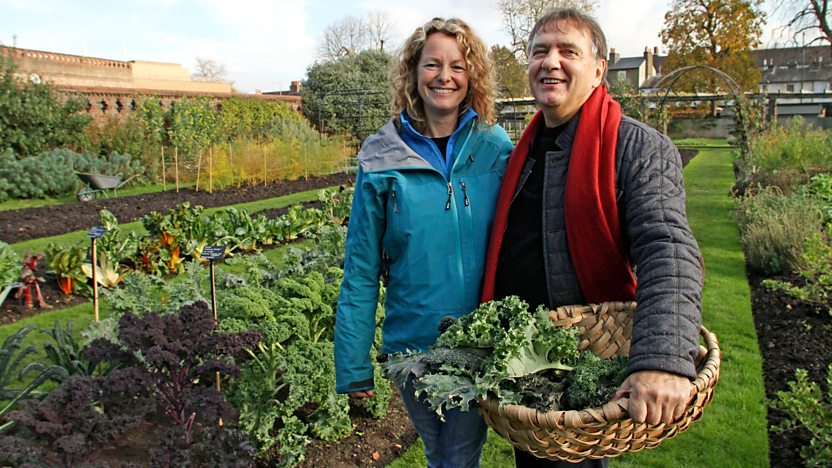Poached quince and winter fruit in spiced wine

- Prepare
- overnight
- Cook
- 30 mins to 1 hour
- Serve
- Serves 4
This dessert defines an exact moment in the season – the end of autumn and the beginning of winter – and I prepare it as soon as the first quince are ripe. However, with its warm and spicy flavours it is also a lovely prelude to Christmas.
Each serving provides 226kcal, 9g protein, 26g carbohydrate (of which 18.5g sugars), 0.5g fat (of which 0.1g saturates), 5g fibre and 0g salt.
From Kew on a Plate
Ingredients
For the red wine jus
- 400ml/14fl oz red wine (see tip)
- 2 tsp stevia powder or 100g/3½oz caster sugar
- ½ vanilla pod
- 4 small cinnamon sticks
- 2 black peppercorns
- 2 bay leaves
- 2 cloves
- 2 thin slices lemon
- 2 thin slices orange
For the winter fruit
- 2 quince, peeled, cored and quartered
- 2 Cox’s Orange Pippin apples, peeled, cored and quartered
- 2 very ripe Conference pears, peeled, cored and quartered
- 4 Agen prunes
- handful frozen blackberries (optional)
Method
For the red wine jus, in a saucepan over a high heat, bring the red wine to the boil for 2 minutes, which will remove much of the alcohol, then add 400ml/14fl oz water and the remaining jus ingredients and bring to a gentle simmer.
For the winter fruit, poach the quince in the simmering jus for around 25 minutes. Add the apples and pears and simmer for 4 minutes. Leave to cool to room temperature before adding the prunes and blackberries (if using). Strain a third of the liquor and freeze overnight; cover and chill the remaining liquid and fruit in the fridge.
To serve, scrape the frozen cooking liquor with a fork to create beautiful flakes of perfumed ice. Arrange the fruit, spices and cooking juices in a large dish or divide between four bowls. At the last moment, put a spoonful of the delicate flakes of spiced wine granita on top of your dessert. You could alternatively serve the granita in small cups from the freezer as a little pre-dessert.
Recipe tips
Tip 1: I normally use vanilla purée, but here I want the vanilla to diffuse its flavour slowly so as to penetrate the quince, and the most effective means of achieving this is to use a pod.
Tip 2: My general rule about wine when cooking is not to use an expensive bottle. Look for a deep, rich-coloured Cabernet Sauvignon or Merlot. Pinot Noir is too light.
Tip 3: It is important that the liquid does not boil while poaching the fruits, as the intensity of the heat will damage their delicate flesh.


